INSIGHTS: Five Blue Water Cruising Essentials for Safety and Comfort
When planning a long-distance cruising adventure there are many factors to consider. Probably most important are the on board systems and equipment that you invest in to make life on board easier, safer and more comfortable. Half way through a planned 10-year odyssey, Alison Gieschen and her husband Dan give some INSIGHT into their top five items on board that they could not live without, as they voyage around the globe.
Published 2 years ago
“The lovely thing about cruising is that planning usually turns out to be of little use.”
Dom Degnon
Whether it’s the weather, global pandemics, family emergencies, or epic breakages, you can only sketch a rough guideline of where you want to sail as a blue water cruiser and when you want to be there.
However, when it comes to the most important items to take with you on this journey, there are certain items that will make your life easier as you undertake your journey upon the sea.
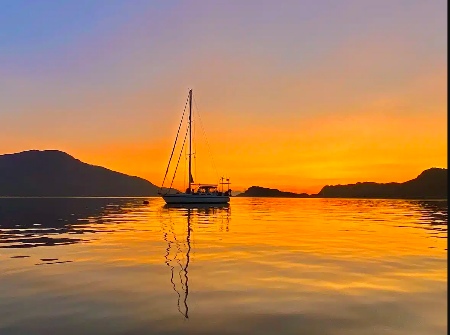

Five years into our circumnavigation we have incorporated each of these ‘must-haves.’ These are not items that we began our journey with, but now that we do have them, we wouldn’t set sail again without them.
Sailing friends and experienced seamen we have met along our journey recommended these upgrades. They have made such a difference in our cruising lifestyle that we want to share this information. Life on the sea isn’t easy!
Here are our Top Five Items that bring safety and comfort to us on our voyage around the globe.
Five Important Items for Living Aboard
1. Lithium Batteries
Lithium batteries have emerged as a superior alternative to AGM lead-acid batteries for sailboats, revolutionizing the maritime industry. Their exceptional performance, durability, and efficiency have evolved us from being a boat with constant power struggles to having enough battery charge to run appliances and wake up each morning with a full battery charge.
We were skeptical to make the change as the first lithium batteries produced had a reputation for catching fire. Some boat insurance companies wouldn’t cover a boat with lithium batteries. The problem was, even with our solar panels and wind generator, we struggled to keep our lead-acid batteries charged.
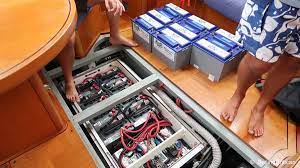
Then, innovations and new development made lithium batteries even more efficient and safer to use. We talked to sailors who made the swap. The resounding consensus was that they were truly a power game -changer. Let’s take a look at some of the facts about lithium and why you might want to consider making the swap:
Facts:
- Energy-packed: Lithium batteries are like little powerhouses. They can store a lot more energy per unit of weight or volume compared to AGM lead-acid batteries. This means sailboats can enjoy lighter and more compact power systems, giving them the freedom to set sail with less weight bogging them down.
- Lightweight wonders: Say goodbye to heavy batteries! Lithium batteries are much lighter than AGM lead-acid batteries. Shedding that extra weight gives sailboats a boost in efficiency, allowing for better performance and smoother sailing adventures.
- Deep-cycle champions: Sailboats often need sustained power for long stretches out at sea. That’s where lithium batteries truly shine. They excel in deep cycling, which means they can discharge a big chunk of their capacity without suffering from significant damage or loss. So you can count on these batteries to keep you going for as long as you need.
- Long-lasting companions: Lithium batteries are built to last. With proper care, they can endure thousands of charge-discharge cycles, giving you long-term reliability and cost-effectiveness. That means fewer battery replacements, saving you money and reducing your environmental impact.
- Lightning-fast charging: Need a quick power top-up? Lithium batteries charge up faster than AGM lead-acid batteries. So you can spend less time waiting around and more time enjoying the open water.
- Super-efficient energy warriors: Lithium batteries are all about making the most of your power. They have superior efficiency, which means they can accept and deliver charges more effectively. So you can maximize your energy usage, minimize waste, and have more power available when you need it most.
- Temperature-friendly: No matter the weather, lithium batteries can handle it. They perform exceptionally well in a wide range of temperatures, even in extreme conditions. They don’t mind the cold either and won’t let sulfation get in their way during long periods of inactivity.
By choosing lithium batteries for your sailboat, you’re signing up for improved energy storage, lighter weight, long-lasting companionship, speedy charging, energy efficiency, and outstanding performance. It’s no wonder these batteries have become the top-pick for modern sailboat power systems.
With lithium, you can use that toaster oven, blender, or mini air fryer in your galley. Some sailors we have talked to have even converted their gas stoves to electric. These energy powerhouses will open new horizons on your boat’s in-house power front.
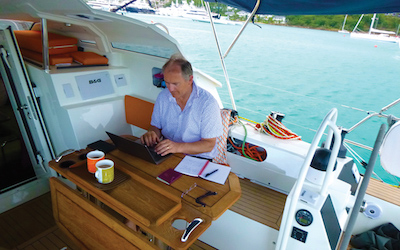

2. Staying Connected
We began our journey as an older boat with outdated and antiquated communications systems. We learned the hard way, that is one shortcut you don’t want to take. Staying connected and having the ability to communicate will make your sailing safer and everything flow more smoothly.
These antiquated systems can hinder effective communication while out at sea, posing potential risks and limitations for sailors. However, the emergence of new and innovative communication solutions has revolutionized connectivity for pleasure cruisers and bluewater sailors.
Let’s explore the facts behind why older sailboats may have outdated communication systems and delve into the most effective modern options, including Starlink, Google Fi, and other groundbreaking innovations, that keep sailors connected even in the vastness of the open ocean.
When it comes time to communicate with maritime authorities, you don’t want to be having trouble reaching them. When you are trying to outrun bad weather and need to contact a marina, it’s frustrating and dangerous if you can’t hail them to secure a berth.
Facts:
- Limited coverage: older sailboats may be equipped with communication systems that rely on limited coverage, such as outdated VHF radios or short-range walkie-talkies. These systems often have a restricted range, making it challenging to maintain reliable communication over long distances or in remote areas.
- Slow data transmission: Traditional communication systems on older sailboats may lack the capability for high-speed data transmission. This can lead to frustratingly slow internet connectivity, hindering the ability to access real-time weather updates, and navigation tools, or stay connected with loved ones.
- Emerging solutions: The introduction of innovative communication systems has transformed connectivity for sailboats. One notable example is Starlink, which now offers global coverage, high-speed data transmission, and low latency. Starlink provides a game-changing solution for sailors, ensuring a reliable internet connection regardless of their location.
- Cellular network options: Sailors can also leverage cellular network solutions, such as Google Fi, to stay connected while at sea. Google Fi utilizes multiple cellular networks and seamlessly transitions between them, ensuring enhanced coverage and connectivity even when offshore. This allows sailors to access the internet, make calls, and send messages using their existing devices.
- Wi-Fi extenders: Wi-Fi extenders are another valuable tool for sailboats, especially when docked or near marinas. These devices amplify and extend existing Wi-Fi signals, providing better connectivity and enabling sailors to stay connected with ease.
- Satellite phones: While traditional satellite phones have been available for some time, recent advancements have made them more compact, affordable, and user-friendly. These phones rely on satellite networks to offer reliable voice communication, text messaging, and even limited data capabilities, ensuring sailors can stay in touch during their journeys.
- Integration with onboard systems: Modern communication systems can integrate seamlessly with other onboard systems, such as navigation tools and weather monitoring equipment. This integration allows sailors to access crucial information in real time, enhancing safety and navigation capabilities.
Realities:
We sailed through several new countries in the Mediterranean last summer. We found the best solution for staying connected through a variety of different countries was to have a limited global Wi-Fi plan. This allowed us to have connectivity when we reached a new country. Once there, we located the closest store to buy a sim card. For around $20 a month, we had unlimited data and calling in that country. During the in-between times, our Google Fi plan helped us stay connected.
3. A Secure Anchoring System
Peace of mind is priceless. You arrive in a new harbor exhausted from a multi-night passage. You put out your anchor and all you want to do is fall into bed for a deep and restorative sleep. This is only possible if you truly trust your anchoring system as dragging anchor is one of a sailor’s worst nightmares.
When it comes to anchoring for blue water cruisers, having the right anchor is essential for a safe and worry-free experience. A reliable anchor can make all the difference in keeping your sailboat secure in various conditions. Let’s explore the facts behind the top anchors favored by blue water cruisers, along with the importance of using a bridle to provide added security to your anchor. A surprising number of sailboats are damaged each year due to dragging anchors, emphasizing the need for proper anchoring techniques.
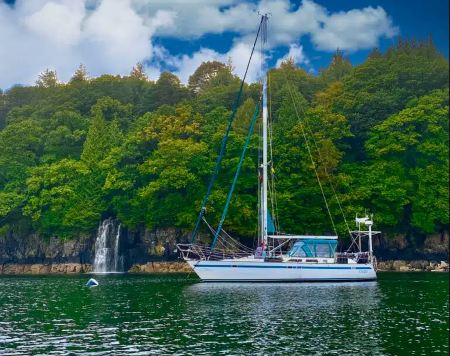

We have had great success and love our Mantus. Paired with our heavy-duty bridle, once we are safely secured at anchor, we are able to sleep well. Here are three anchors that are widely used and touted by bluewater sailors.
Facts:
- Rocna: The Rocna anchor is widely regarded as one of the top choices for blue water cruisers. The design features a sharp, concave blade that allows it to dig into the seabed quickly. The Rocna anchor provides excellent holding power and is well-suited for a variety of bottom types.
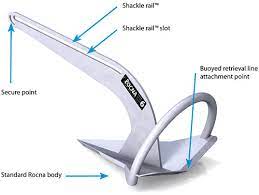

- Bruce: The Bruce is a claw anchor that has thee forks or claws. The claws scoop into the sand. It is highly regarded for its exceptional holding power and versatility. Its concave shape allows it to penetrate the seabed effectively, making it a preferred choice for cruisers seeking reliable performance in diverse anchoring situations. However it has difficulty securing to clay and hard mud.
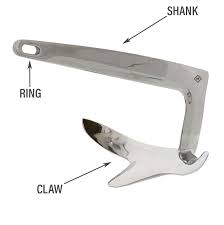

- Mantus: The Mantus anchor has gained a strong following among blue water cruisers for its innovative design and reliable holding capabilities. The sharp tip and wide blade create a solid grip on the seabed, providing peace of mind in various anchoring conditions.
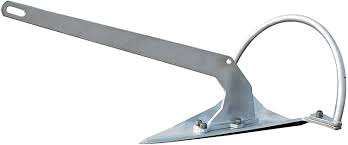

When anchoring, using a bridle is crucial to enhance the security of your anchor. A bridle is a setup of lines or chains that attach to the anchor rode and connect to both sides of your sailboat. It helps to distribute the load evenly, reducing strain on the anchor and preventing excessive swinging or snatching in strong winds or currents.
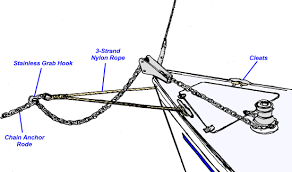

Surprisingly, a significant number of sailboats are damaged every year due to dragging anchors. Strong winds, changing tides, or sudden shifts in weather conditions can cause an improperly set or inadequate anchor to lose its hold, leading to a sailboat drifting into hazards or colliding with other vessels. We have witnessed many dragging incidents in our travels thus far. Thankfully, we haven’t dragged yet and are counting our blessings. Using a reliable anchor ensures peace of mind and a secure anchoring experience for blue water cruisers.
Additionally, employing a bridle adds an extra layer of security by distributing the load evenly and minimizing the risk of anchor slippage. By taking these precautions, you can significantly reduce the chances of anchor-related accidents, and increase worry-free cruising.
4. Reliable Watermaker
We often run across other sailors along our travels who are cruising without the benefit of a water maker. While you can exist without one, having a reliable water maker to make water anywhere, anytime along your voyage, adds the huge bonus of self-sufficiency with a heaping side of piece of mind.
I’m adding the word ‘reliable’ to the title as having a less-than-reliable water maker results in more consternation than benefit. We should know. After dealing with this scenario for a couple of years, our recent upgrade to a Spectra system was one of our best decisions ever.
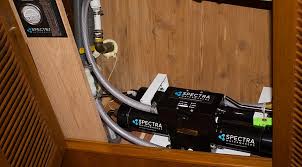

Depending on the brand you choose, water makers are so energy efficient now that you can run them with very little drain on your batteries. Hot showers and plenty of water for drinking and doing dishes is a luxury we appreciated and definitely enhance our level of comfort while cruising.
Solid reasons to consider adding a water maker to your boat:
- Reliable freshwater supply: Convert seawater into clean and drinkable freshwater, ensuring a steady and reliable supply during your voyages.
- Convenience: Eliminate the need to rely on shore-based resources; many marinas have a less than desirable quality of drinking water.
- Cost-effective: Save money on purchasing and transporting bottled water, as well as refilling water tanks at marinas.
- Sustainability: Reduce your environmental footprint by minimizing plastic waste from disposable water bottles.
Best-rated brands of water makers:
- Spectra Watermakers: Highly regarded for their quality, efficiency, and durability. Spectra models are known for their high water production rates and energy efficiency.
- Katadyn Survivor: Renowned for their compact and portable designs, Katadyn Survivor water makers are favored by sailors who prioritize space-saving solutions without compromising performance.
- Other reputable brands include Sea Recovery, HRO Systems, and Schenker Watermakers, known for their innovative technology and reliable performance.
By incorporating a top-rated water maker brand on your bluewater cruising boat, you can enjoy the peace of mind and convenience of a consistent freshwater supply throughout your adventurous journeys. Say goodbye to water-related concerns and embrace the freedom to explore new horizons with ease.
5. Copper Coat Your Bottom
Nothing is worse than a dirty bottom. It’s no surprise after you’ve been sitting in a marina for a few weeks when you look down and see those little green-fingered fiends attached to the waterline of your sailboat. It’s an annoying inevitability.
Furthermore, after numerous bottom scrubbings, you need to haul your boat out and apply a new coat of bottom paint. This is a headache you don’t need and there is a cost-effective and simple solution. We were convinced to give Copper Coat a try after numerous sailors relayed their testimonials of how easy to clean and maintain their boat bottom was after making the switch.
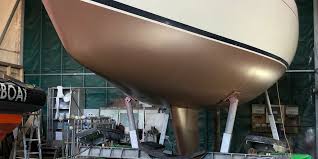

Why go Copper?
If you’re looking for an easier and more economical solution for protecting your sailboat’s hull, look no further than Copper Coat bottom paint. Here is why Copper Coat is a fantastic choice for your blue-water cruising adventures.
- Long-lasting protection: Copper Coat is a revolutionary anti-fouling bottom paint that provides long-lasting protection for your sailboat’s hull. Once applied, it can last up to 10 years, saving you time, effort, and money in the long run.
- Say goodbye to annual paint jobs: Unlike traditional bottom paints that require annual reapplication, Copper Coat’s durable copper-based formula means you won’t have to worry about hauling out and repainting your boat every season. Enjoy more time on the water and less time in the boatyard!
- Eco-friendly and non-toxic: Copper Coat is an environmentally friendly option as it reduces the need for frequent paint stripping and disposal. It releases only a small amount of copper over time, making it safe for marine life while effectively preventing barnacles and other organisms from attaching to your hull.
- Increased speed and fuel efficiency: A smooth, clean hull results in improved hydrodynamics, which translates into increased speed and fuel efficiency. By using Copper Coat, you’ll experience better performance and potentially save on fuel costs during those long blue water passages.
- Cost-effective in the long run: Although Copper Coat may have a higher upfront cost compared to traditional bottom paints, its longevity and the elimination of annual paint jobs make it a cost-effective investment over time. You’ll spend less on paint and more on enjoying your blue water cruising adventures!
So, if you’re ready to simplify your maintenance routine, save money, and enhance your sailboat’s performance, consider giving Copper Coat bottom paint a try. Embrace the benefits of long-lasting protection, environmental friendliness and improved fuel efficiency. Set sail with confidence and spend more time exploring the open waters, knowing that your hull is well-protected with Copper Coat. We love ours!
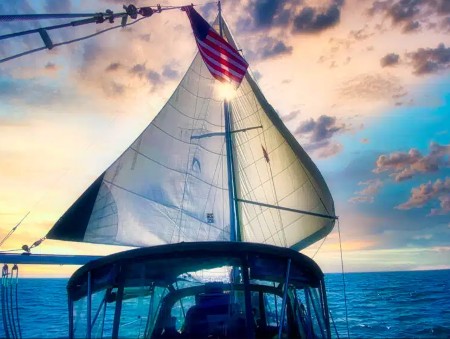

I hope these tips will be useful in making upgrades to your blue water cruising boat. Initially, we were hesitant to make these major purchases as we have a limited cruising budget. However, each of these upgrades has made a huge difference in our comfort and efficiency. We are all about making the best of each day as you never know what tomorrow will bring and what storms you will be facing. Making the best of each and every day, and enjoying the little things, are what make cruising that much better.
Fair Winds,
Alison and Dan
SV Equus
……………………………………….
About the Author:


Read Alison’s other INSIGHT articles on Noonsite:
Read more about their voyages:
Watch their videos:
Sailing Equus YouTube Channel.
……………………………………
Other INSIGHTS can be found here.
Read more Cruising Information reports on Essential items for a cruising life.
…………………………………
The opinions expressed in this article are the author’s own and do not reflect the view of Noonsite.com or World Cruising.
…………………………………
Find out all news, reports, links and comments posted on Noonsite, plus cruising information from around the world, by subscribing to our FREE monthly newsletter. Go to https://www.noonsite.com/newsletter/.
Related to the following Cruising Resources: Circumnavigation, Circumnavigation, Communications Equipment, Cruising Information, Electrics and Electronics, Equipment, General, General, Insights, Internet on Board, Planning and Preparation, Position Reporting, Routing, Watermakers


